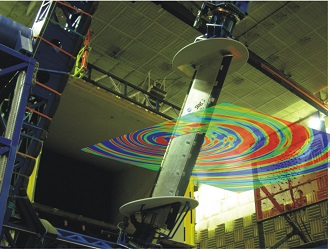Take-off in sight for quieter aircraft

Related topics
Innovation Transport Smart, green and integrated transport Belgium Finland France Germany Greece Italy Netherlands Poland Romania Spain Sweden United Kingdom Switzerland Egypt Russian Federationdate: 05/08/2015
Project: OPtimisation for low Environmental Noise...
acronym: OPENAIR
See also: CORDIS
The technologies developed by the OPENAIR project aim to help the aviation industry meet its target of reducing the perceived noise from aircraſt by 50%, or 10 decibels, over the two decades to 2020 (and 65% by 2050).
OPENAIR, built on the work of a number of other EU-funded projects. These include SILENCE(R), which validated technologies that,
together with fl ight procedures, could reduce aircraſt noise by fi ve decibels.
OPENAIR took up the challenge by testing 15 possible noise reducing technologies. These included next-generation engine housing designs, adjustments to an aircraſt ’s airframe, and new noise absorbing materials. A new landing gear design arranged components into a confi guration that reduced noise. The researchers also used complex computer models of how air fl ows and how aerodynamic forces interact with surfaces to create noise.
The team carried out large-scale testing to assess their effi cacy, using fan rigs, noise testing facilities and wind tunnels. These evaluations showed that the combined benefi ts of these technologies could reduce noise by 2.3 decibels.
This work sets the stage for further research and development that will take these technologies to new tests at full-scale sizes.
These will determine technical feasibility and economic viability, says project coordinator Eugène Kors of France-based SAFRAN-Snecma.
“The demand for air transport, both from private consumers and from businesses, is steadily growing,” he adds.” The inexorable
move towards more and more fl ights means the need to fi nd ways of making aeroplanes signifi cantly quieter is an urgent one.”
Integrated solutions
OPENAIR, which ended in September 2014, involved 47 partners worldwide, teaming universities and research centres in Europe and Africa with major players in the aeronautics fi eld such Airbus, Dassault, Rolls Royce and
SAFRAN-Snecma.
This collaboration helped the researchers take a holistic approach. Rather than looking, for example, at the noise generated by engine fan blades or the wingtips on their own, OPENAIR took into account the interaction among the diff erent parts of the aircraft. This allowed them to achieve integrated, lightweight solutions.
During the project, researchers at Egypt-based Ain Shams University worked with KTH Royal Institute of Technology in Stockholm, Sweden to develop a special paint that could measure this noise throughout the aircraft under test conditions.
The aim was to allow researchers to measure noise in places where ordinary sensors could not be placed. The paint acts as a sensor, or ‘microphone’ to pick up sound, says project researcher Tamer Elnady of Ain Shams’ faculty of engineering.
Elnady says he knew of the university’s expertise in the fi eld as he is a KTH graduate. Ain has also worked with KTH on several
educational and research projects over the past decade.
“We used the expertise of their techniciansand professors to help us with the electric circuit of the signals of our sensors,” he says.
“This technology can be used as a sensor for sound and vibration in places where it is environmentally harsh to place a sensor.”
The team developed a polymer-based composite material enriched with nano-structured carbon-black in liquid form.
It can be spread on any surface with the thickness required to be sensitive to acoustic pressure waves.
They applied various electrical and acoustic tests to diff erent compositions of the paint to reach a satisfactory performance over the
targeted frequency range.
The samples demonstrated a satisfactory response in picking up sound vibrations. However, the sensor’s sensitivity was below expectations and still needs to be improved, adds Elnady.
With the end of OPENAIR, the two universities plan to continue working together to further develop the sensor paint for commercial
testing.
Check also our publication Investing in European success - EU-Africa cooperation in science, technology and innovation
